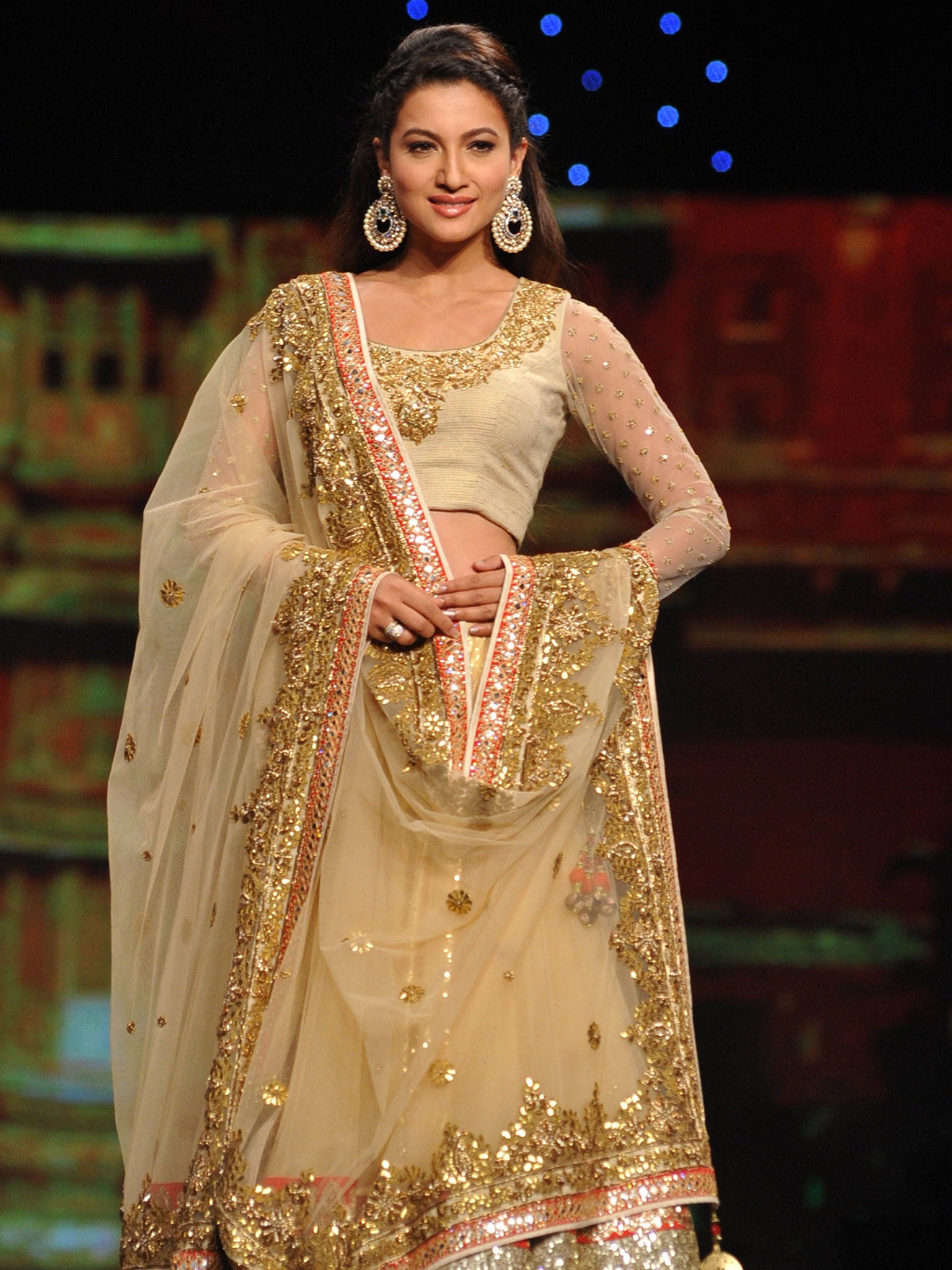Gauhar Khan slapped: 'Traditional Indian clothes were far skimpier than actress' dress'
A fashion historian says it used to be acceptable for women to wear far less

Your support helps us to tell the story
From reproductive rights to climate change to Big Tech, The Independent is on the ground when the story is developing. Whether it's investigating the financials of Elon Musk's pro-Trump PAC or producing our latest documentary, 'The A Word', which shines a light on the American women fighting for reproductive rights, we know how important it is to parse out the facts from the messaging.
At such a critical moment in US history, we need reporters on the ground. Your donation allows us to keep sending journalists to speak to both sides of the story.
The Independent is trusted by Americans across the entire political spectrum. And unlike many other quality news outlets, we choose not to lock Americans out of our reporting and analysis with paywalls. We believe quality journalism should be available to everyone, paid for by those who can afford it.
Your support makes all the difference.An Indian television presenter who was slapped by a male audience member because he thought her dress was too revealing has tradition on her side, according to a historian.
Gauhar Khan was left visibly traumatised after the attack last month, while she filmed the grand finale of singing competition Raw Star.
Akil Malik, 24, took offence to her cutaway dress and ran up to the stage to hit her across the face and threaten her.
“Being a Muslim woman, she should not have worn such a short dress,” the Mumbai police quoted him as saying afterwards.
“Actresses are the face of society and they should not wear skirts and short clothes as they make youngsters get attracted to them sexually…if actresses stop wearing short clothes, crime will decrease and lead to a better society.”
The incident prompted a debate in India about changing fashions and the notion of modesty but according to historian Toolika Gupta, short dresses are an ancient tradition in India.
Although the country is most associated with floor-length saris and salwar kameezes for women, that has not always been a case.
Ms Gupta wrote on the BBC News website that what many Indians today believe are home-grown ideas of decorum and modesty are in fact British imports left over from the Empire.
The earliest representations of women show them with minimal clothing, she said, including in sculptures from the Maury and Sunga periods around 300 BC, when men and women wore rectangular pieces of fabric, covering their genitals and little else.
“Modesty has had different definitions over time and in different regions and communities,” she wrote. “It was not always about covering your face and body and in many respects India's hot climate led the way. People just did what was convenient.”

Even in the colonial era some women in southern in India did not cover the upper part of the body and saris were routinely worn without blouses over bare breasts in Bengal, Ms Gupta said.
She concluded that Ms Khan’s dress, with a fully covered front and cutaway back, went far beyond the requirements of “modesty” dating back centuries.
Her attacker was arrested on charges of assault and intimidation and has been remanded in custody.
Join our commenting forum
Join thought-provoking conversations, follow other Independent readers and see their replies
Comments